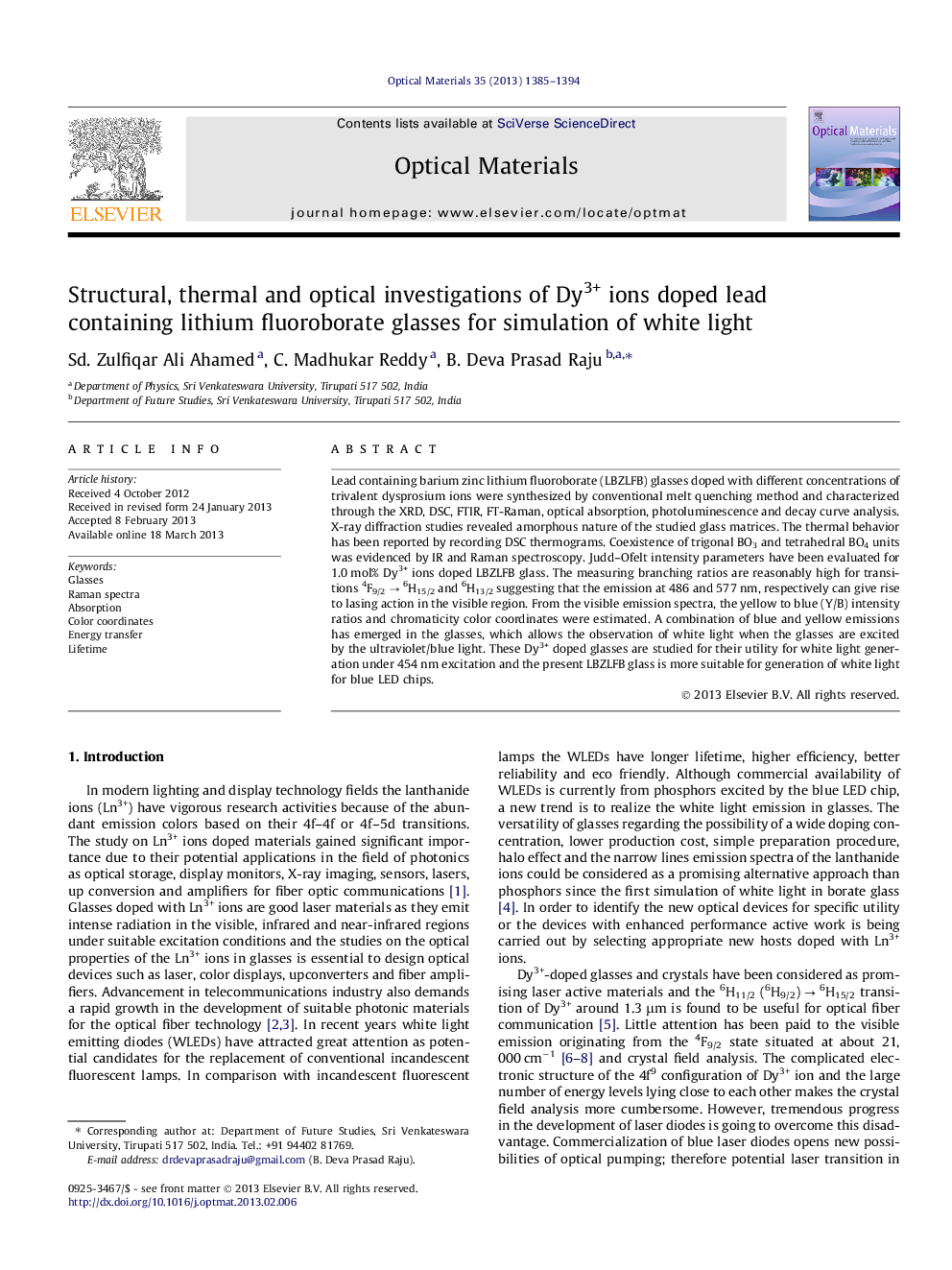| کد مقاله | کد نشریه | سال انتشار | مقاله انگلیسی | نسخه تمام متن |
|---|---|---|---|---|
| 1494606 | 992914 | 2013 | 10 صفحه PDF | دانلود رایگان |

Lead containing barium zinc lithium fluoroborate (LBZLFB) glasses doped with different concentrations of trivalent dysprosium ions were synthesized by conventional melt quenching method and characterized through the XRD, DSC, FTIR, FT-Raman, optical absorption, photoluminescence and decay curve analysis. X-ray diffraction studies revealed amorphous nature of the studied glass matrices. The thermal behavior has been reported by recording DSC thermograms. Coexistence of trigonal BO3 and tetrahedral BO4 units was evidenced by IR and Raman spectroscopy. Judd–Ofelt intensity parameters have been evaluated for 1.0 mol% Dy3+ ions doped LBZLFB glass. The measuring branching ratios are reasonably high for transitions 4F9/2 → 6H15/2 and 6H13/2 suggesting that the emission at 486 and 577 nm, respectively can give rise to lasing action in the visible region. From the visible emission spectra, the yellow to blue (Y/B) intensity ratios and chromaticity color coordinates were estimated. A combination of blue and yellow emissions has emerged in the glasses, which allows the observation of white light when the glasses are excited by the ultraviolet/blue light. These Dy3+ doped glasses are studied for their utility for white light generation under 454 nm excitation and the present LBZLFB glass is more suitable for generation of white light for blue LED chips.
► Authors prepared LBZLFB glasses for different concentrations of Dy3+ ions.
► Glasses are characterized by XRD, FTIR, absorption, emission and lifetimes.
► J–O theory was used to calculate different radiative properties.
► Yellow to blue intensity ratios and color coordinates are discussed.
► Glasses are useful for the development of WLEDs and photonic devices.
Journal: Optical Materials - Volume 35, Issue 7, May 2013, Pages 1385–1394